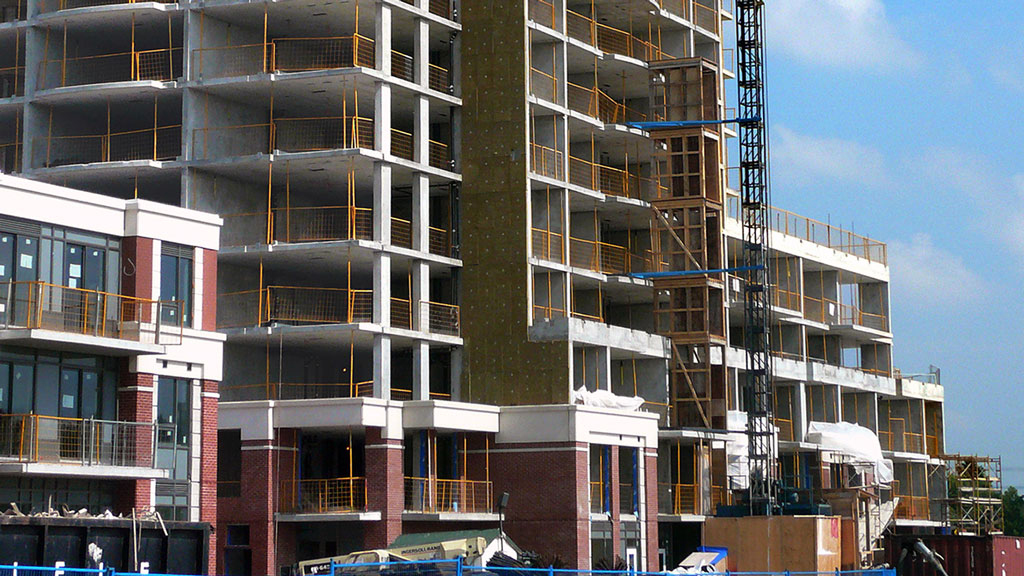Innisfil and East Gwillimbury were the hottest spots for new-home construction in the Toronto census metropolitan area (CMA) between 2019 and 2020 according to data released recently by Statistics Canada.
In one year, the housing stock in East Gwillimbury jumped 9.3 per cent, making it the municipality with the fastest housing-stock growth in the Toronto region and tripling the fastest-growing municipality in the Vancouver CMA.
The insights come from a new program launched by Statistics Canada, the Canadian Housing Statistics Program (CHSP), which also includes reports on vacant land availability and investments by new-Canadian homebuyers.
In the Toronto CMA, the housing stock grew by 1.6 per cent between 2019 and 2020. In the city of Toronto census subdivisions (CSDs), the rate rose from 1.2 per cent in 2018-2019 to 1.6 per cent in 2019-2020.
Single-detached houses are still the most common property type in all four provinces studied – Ontario, B.C., Nova Scotia and New Brunswick. But that share is gradually declining, especially in British Columbia and Ontario. From 2019 to 2020, condominium apartments were the largest contributor to housing stock growth in British Columbia (54.4 per cent of net new properties) and Ontario (38.8 per cent). This also held true in the CMAs of Toronto (59 per cent) and Vancouver (75 per cent).
Jean-Philippe Deschamps-Laporte, Statistics Canada’s chief of investment, science and technology division, observed that relative affordability is driving the growth of new homes in municipalities such as East Gwillimbury, Innisfil, Milton, Grand Valley, Southgate, Waterloo, New Tecumseth and Richmond Hill in the Toronto region, the eight hottest areas of growth percentage-wise.
“This is where younger buyers end up buying property, so you have like strong growth, you have more affordable properties, styles and homes that maybe younger families would like,” he commented. “And that happens more in the suburbs of the Toronto area.”
The CHSP was launched in 2016, Deschamps-Laporte explained, as governments were pressed to deal with emerging issues but found existing sources were not gathering suitable data to enable proper analysis and good policy-making. Other housing stakeholders such as builders and planners were also trying to make decisions about zoning and building for families.
“We have had partners at the municipal level saying, ‘we’re putting forward family-friendly zoning policy and we want to know whether the additional stock that is being built is indeed family-friendly,’ ” Deschamps-Laporte said.
The new September data also found that from 2018 to 2020, new vacant land in the Toronto CMA did not keep pace with construction. As a result, the total number of vacant properties in Toronto fell by 3,245.
Canada was the first jurisdiction in the world to track homes purchased by non-residents, Deschamps-Laporte said. The share of residential properties owned by non-residents was unchanged in Ontario (2.2 per cent) in 2020 compared with 2019, and declined in British Columbia, from 3.2 per cent to 3.1 per cent.
Among all CSDs within Vancouver, Greater Vancouver A, which includes the University Endowment Lands, had the highest non-resident ownership rate in 2020, at 14.9 per cent.
The CSD of the city of Toronto continued to have the highest non-resident ownership rate in Ontario at 3.8 per cent.
The share of owner-occupied properties in urban areas of Ontario edged down from 80.7 per cent in 2019 to 80 per cent in 2020. Across those urban areas, the increase in the number of owner-occupied properties (up 17,635) was about half that of non-owner-occupied properties (up 34,915).
In the Toronto CMA, the number of properties that were not occupied by at least one owner rose by 5.9 per cent, while the number of owner-occupied properties edged up 0.7 per cent.
Condominium apartments were the least likely to be occupied by their owners in every province examined by the study in 2020. This was especially true in Ontario, where 55.9 per cent of condominium apartments were owner-occupied, compared with 87.9 per cent of single-detached houses.
It’s that large stock of non-owner-occupied condos that is contributing significantly to the local rental stock, Deschamps-Laporte said.
“I think it’s sort of in line with the data CMHC has been producing and observers of housing markets would say, that the vast majority of supply to the rental sector in the last 20 years, and this has changed recently with low interest rates and different policies that have been put in place, but the bulk of, let’s say from 2000 to maybe more recently, it’s been people putting condos in the rental market and not as much large multi-unit rental properties,” he said.
The latest data did not include Ontario in determining the percentage of immigrants who purchased properties in 2018. British Columbia had the highest share of immigrant buyers, with over one-third of homebuyers (35.2 per cent) being immigrants, while accounting for 28.3 per cent of the total population in the province.
Follow the author on Twitter @DonWall_DCN.











Recent Comments